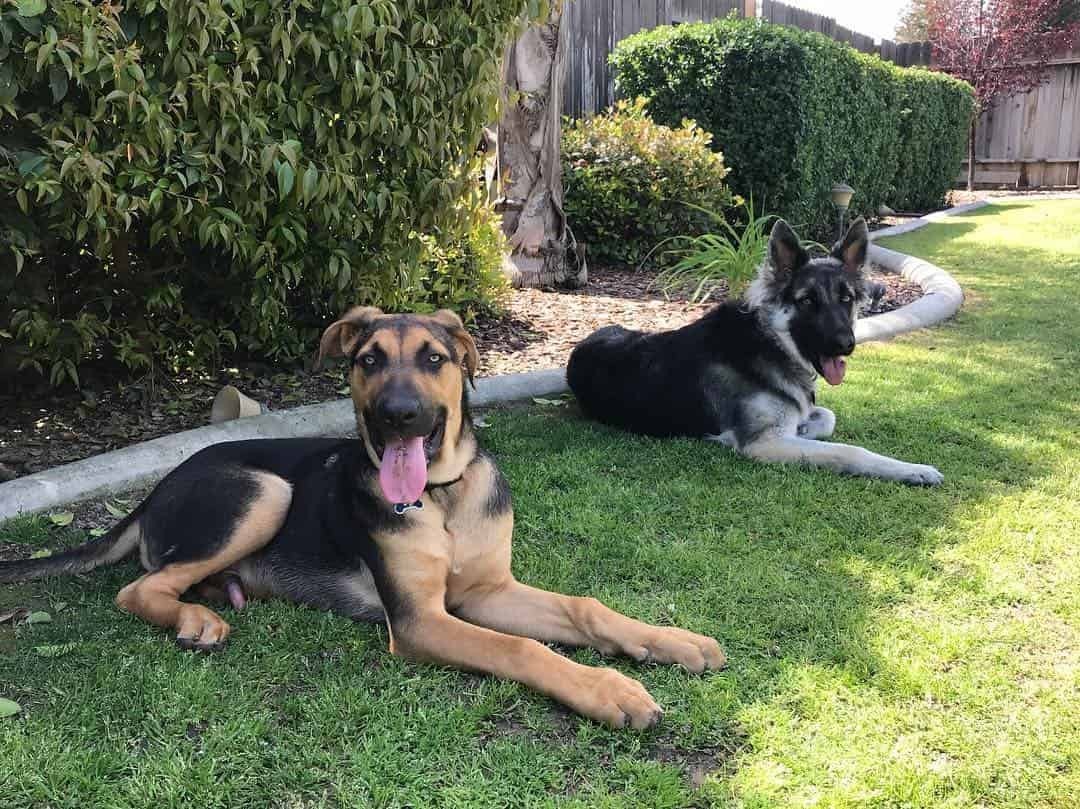
The Great Dane German Shepherd mix, also known as the Shepherdane, represents a fascinating crossbreed that combines two iconic dog breeds. This designer hybrid merges the intelligence and protective nature of the German Shepherd with the gentle temperament and impressive size of the Great Dane. Standing 28-30 inches tall and weighing between 65-130 pounds, these dogs exhibit varied physical and behavioral traits from both parent breeds. While they make loyal family companions with proper training and socialization, their large size, exercise requirements, and potential health concerns necessitate dedicated and experienced owners who can provide appropriate care and attention.
Ownership Considerations and Suitability
Cost and Time Investment
The German Shepherd Great Dane mix requires significant financial and time commitments. Initial costs include:
- Puppy price: $600-2000 from reputable breeders
- Essential supplies: $300-500 (beds, crates, toys, etc.)
- Monthly food costs: $80-120 for high-quality large breed food
- Veterinary care: $500-1000 annually for routine care
- Professional training: $50-100 per session recommended
Beyond monetary investment, owners must dedicate substantial daily time for:
- 60-90 minutes of exercise
- Multiple training sessions
- Regular grooming
- Mental stimulation activities
- Social interaction
Living Space Requirements
The German Shepherd Great Dane cross needs appropriate living accommodations:
- Minimum 1500-2000 square feet of indoor space
- Securely fenced yard of at least 1/4 acre
- Separate feeding/sleeping areas
- Non-slip flooring to prevent joint strain
- Temperature-controlled environment
- Limited stairs due to joint concerns
- Reinforced furniture due to size/weight
- Multiple water stations throughout living space
The breed is unsuitable for:
- Small apartments
- Homes without yards
- Areas with strict breed restrictions
- Households unable to provide constant supervision
- Properties with weight limits
This information complements existing content by focusing specifically on the practical requirements of ownership rather than general breed characteristics or care guidelines previously covered.
Physical Characteristics and Appearance
Size and Structure
The German Shepherd Great Dane mix typically stands 28-34 inches tall at the shoulder with a muscular, athletic build. Males tend to be slightly larger, though individual size varies considerably. Their weight ranges from 65-130 pounds when fully grown. The head combines features of both breeds - a long muzzle and pointed ears like the German Shepherd, with the Great Dane's broad skull and soulful eyes. The neck is strong and powerful, leading to a deep chest and robust legs built for endurance.
Coat Variations
These dogs generally have a double coat that comes in various colors including black, brindle, fawn, harlequin, and merle patterns. The outer coat can range from short to medium length, while the undercoat remains dense and weather-resistant. Coat texture tends to be smooth and sleek like the Great Dane rather than the thicker German Shepherd coat.
Temperament, Training and Exercise Requirements
Intelligence and Trainability
While previous sections covered basic training needs, this section focuses specifically on mental capabilities. The German Shepherd Great Dane cross demonstrates exceptional intelligence, combining the German Shepherd's working drive with the Great Dane's quick learning ability. They excel at:
- Problem-solving tasks
- Advanced obedience work
- Agility training
- Scent detection activities
- Complex command sequences
Exercise Intensity Levels
These dogs require structured exercise that balances their size and energy levels:
- 20-30 minutes of high-intensity activity twice daily
- 30-40 minutes of moderate exercise like jogging or swimming
- 2-3 shorter training sessions for mental stimulation
- Regular off-leash play in secured areas
- Age-appropriate exercise to protect growing joints
Exercise should be carefully monitored during growth phases (up to 2 years) to prevent joint stress. Activities should be varied to maintain engagement and prevent boredom-related behaviors.
Health Management and Care Considerations
Preventive Health Measures
The German Shepherd Great Dane mix requires specific preventive care due to their size and genetic predispositions. Key preventive measures include:
- Regular joint supplements starting at 6 months
- Weight management to prevent strain on joints
- Elevated food bowls to reduce risk of bloat
- Limited exercise during growth phases
- Monthly heartworm prevention
- Regular dental cleanings
- Scheduled wellness exams every 6 months
Nutrition and Dietary Requirements
While previous sections covered basic feeding guidelines, this section focuses on specialized nutritional needs. The German Shepherd Great Dane cross requires carefully balanced nutrition:
- 25-30% protein content for muscle maintenance
- Controlled calcium levels (1.2-1.5%) during growth
- Glucosamine and chondroitin supplements
- Limited fat content (12-15%) to prevent weight gain
- Split daily portions into 2-3 smaller meals
- Specific caloric requirements:
- Puppies: 20-25 calories per pound of body weight
- Adults: 15-20 calories per pound of body weight
- Seniors: 12-15 calories per pound of body weight
Special attention must be paid to feeding schedules and portion control to prevent bloat, which is common in deep-chested breeds. A consistent feeding routine with measured portions helps maintain optimal health and weight.
Conclusion
The German Shepherd Great Dane mix is a large, intelligent breed that requires significant commitment in terms of both resources and care. Key findings show these dogs need substantial living space (1500-2000+ square feet), extensive daily exercise (60-90 minutes), and considerable financial investment for proper care, including monthly costs of $80-120 for food alone. Their size (28-34 inches tall, 65-130 pounds) and specific health considerations demand careful attention to preventive care, particularly regarding joint health and nutrition.
For potential owners, these findings indicate that this mix breed is best suited for experienced dog owners with adequate space, time, and financial means. The combination of high intelligence and physical demands requires dedicated training, socialization, and exercise regimens. While they can make excellent companions, prospective owners should carefully evaluate their ability to meet this breed's substantial needs before making the commitment to ensure the best outcome for both dog and owner.